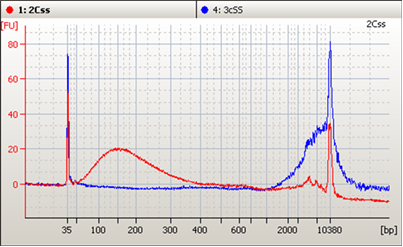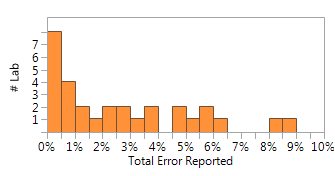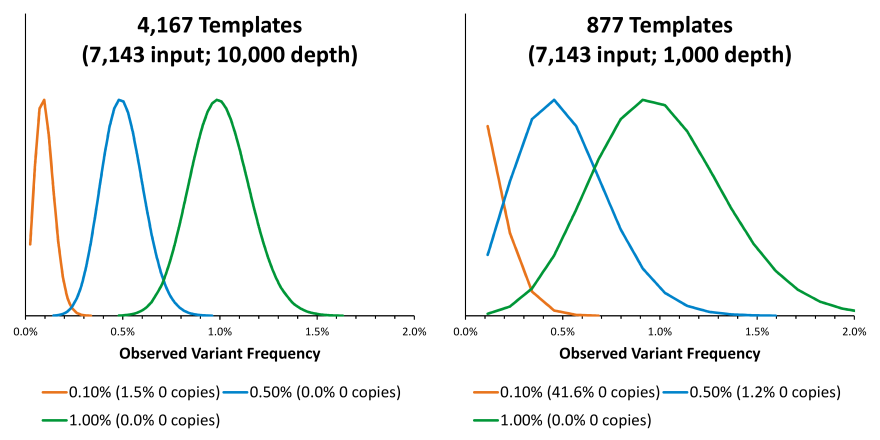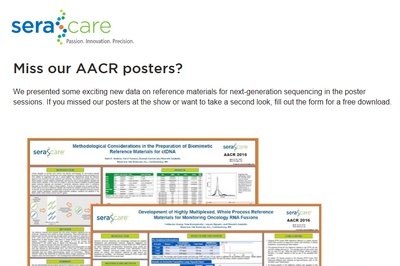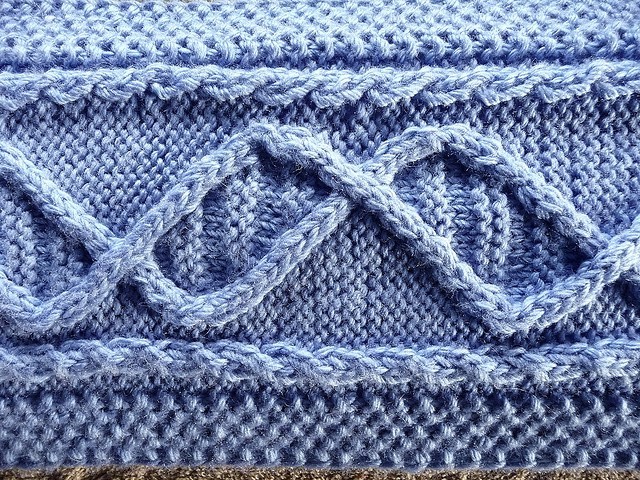Choose your Article Focus | NGS | Molecular & Serology
Three liquid biopsy problems solved by the most patient-like ctDNA reference materials
Category: cfDNA, ctDNA, reference materials
Posted by
Dale Yuzuki on Jul 24, 2017 12:00:00 AM
Clinical genomics laboratories are increasingly looking to liquid biopsy cancer assays to complement their current solid tumor assays. Compared to their solid tumor assay counterparts, circulating tumor DNA (ctDNA) assays offer a different set of challenges to consider for clinical labs. One of the most important of which, is to develop a set of reagents that are appropriately validated to determine the critical performance of the assay across many parameters. The ctDNA targets of liquid biopsy assays are typically at much lower allelic frequencies and require a robust and reproducibly designed assay to consistently detect these important variants.
0 Comments Click here to read/write comments
How Many Target Copies Are Present in Your Plasma DNA Sample?
Category: liquid biopsy, cancer, Assay Development, ctDNA
Posted by
Dale Yuzuki on Jun 15, 2017 12:00:00 AM
The field of circulating tumor DNA analysis (ctDNA, also sometimes called in a larger context “liquid biopsy”) holds great promise for monitoring response to cancer treatment, assisting therapeutic choice, monitoring recurrence, and for pre-cancer screening. As such there is a great amount of assay development and ongoing clinical trials; at ClinicalTrials.gov searching for the term "Circulating DNA" you can find over 180 open clinical trials for a wide range of tumor types and interventions.
0 Comments Click here to read/write comments
Clinical Laboratories: You Are Not Alone. (Part II)
Category: QC Challenges, NGS, ctDNA, reference materials
Posted by
Matt Ryder on Dec 7, 2016 12:00:00 AM
Previously, we wrote about some of the Quality Control challenges that clinical laboratories performing Next Generation Sequencing (NGS) face towards ensuring their assays are safe and effective for guiding medical management decisions. Reliable access to high quality reference materials is necessary to help overcome these challenges; however, it is not sufficient. Insights that reference materials provide into the health of an NGS assay are only as good as laboratories’ ability to use their QC data effectively. With limited time and resources to collect, organize, access, and analyze QC metrics, laboratories may frequently rely on reference materials as binary indicators of Pass/Fail: As long as the expected endpoint results are obtained, an assay is considered to be performing well. The drawback of this approach is that it is reactive, rather than proactive: A sufficient number of failures must occur within a given timeframe before a troubleshooting investigation is performed. By the time a problem is recognized, resources have been wasted and turnaround times (TAT) delayed; in some cases, fidelity of patient results may even have been put at risk. Additional time and costs are then incurred as the investigation proceeds. Specimen analysis by NGS yields a wealth of information in addition to endpoint variant calls that is indicative of assay performance. Data such as nucleic acid quantity and quality at different steps throughout the workflow (PDF) and sequencing library characteristics are generated every time a reference material is tested. However, these data must be carefully tracked and trended to allow use as highly informative QC parameters. For clinical laboratories whose primary focus is on patient testing and reporting, granular QC metrics may not be captured and reviewed as part of routine test monitoring.
0 Comments Click here to read/write comments
What lessons for liquid biopsy have been learned from fetal aneuploidy testing?
Category: liquid biopsy, NIPT, ctDNA
Posted by
Russell Garlick, PhD on Sep 30, 2016 12:00:00 AM
Non-invasive prenatal screening (NIPS) is currently offered in over 80 countries, covering over 80 million annual births, with an estimated volume of over one million screening tests performed annually. First offered in 2011, there has been rapid adoption of these genomic tests in the marketplace.
0 Comments Click here to read/write comments
FDA-AACR Liquid Biopsies in Oncology Drug and Device Workshop
Category: FDA, clinical genomics, NGS, cancer, LDT, ctDNA, reference materials
Posted by
Yves Konigshofer, PhD on Aug 8, 2016 12:00:00 AM
The presentations during the FDA-AACR Liquid Biopsies in Oncology Drug and Device Development Workshop on July 19, 2016 included several important pieces of information that will likely guide the development of assays and their review by the FDA.
0 Comments Click here to read/write comments
American Association for Cancer Research 2016 ctDNA highlights
Posted by
Dale Yuzuki on May 2, 2016 12:00:00 AM
At the American Association for Cancer Research conference recently held in New Orleans, LA (April 16 - April 20, 2016) one theme that generated considerable interest was circulating tumor DNA detection, sometimes called liquid biopsy (although that term also encompasses circulating tumor cells). A few of the ctDNA presentations are highlighted below.
0 Comments Click here to read/write comments
Highlights from the 2016 Molecular Medicine Tri-Conference
Category: clinical genomics, cancer, Inherited Disease, ctDNA, reference materials
Posted by
Dale Yuzuki on Mar 22, 2016 12:00:00 AM
We are living through a time of rapid change in the clinical genetics laboratory, though at times it may appear that change doesn’t occur fast enough given the challenges within the existing healthcare system. At the recent Molecular Medicine Tri-Conference held in San Francisco March 7 through 11 2016, here are a few summary highlights of the conference.
0 Comments Click here to read/write comments
Circulating Tumor DNA Poster at Keystone Symposium
Category: SeraSeq, clinical genomics, cancer, ctDNA, reference materials
Posted by
Dale Yuzuki on Feb 11, 2016 12:00:00 AM
The Keystone Symposia is an organization with 44 years of history on specialized topics across the fields of molecular and cellular biology. This week in Banff, Alberta, Canada is a Keystone Symposia conference called The Cancer Genome, along with a joint meeting on Genomics and Personalized Medicine. Their Twitter description (@KeystoneSymp) describes the Keystone organization as “A catalyst for accelerating life science discovery and connecting scientists within and across disciplines at symposia worldwide”.
0 Comments Click here to read/write comments
Circulating tumor DNA liquid biopsy needs reference standards
Category: AMP, ctDNA, reference materials
Posted by
Dale Yuzuki on Nov 3, 2015 12:00:00 AM
The science of metrology is tightly coupled with biological science, in tandem with biology becoming less descriptive and more quantitative over the past half-century. The US National Institute of Standards and Technology (NIST), an agency of the US Department of Commerce, has been established to ‘promote U.S. innovation and industrial competitiveness by advancing measurement science, standards and technology in ways that enhance economic security and improve our quality of life’.
0 Comments Click here to read/write comments

